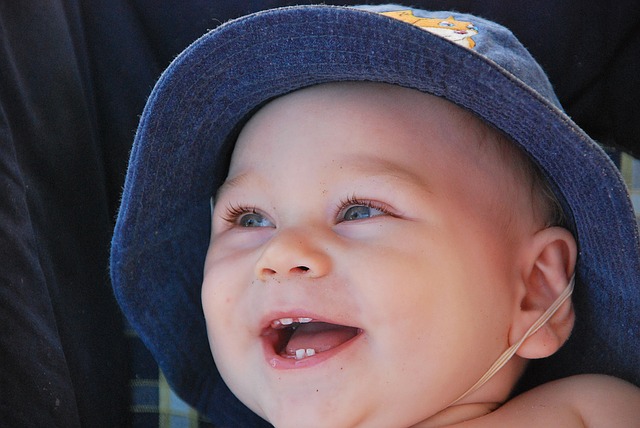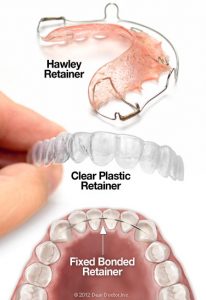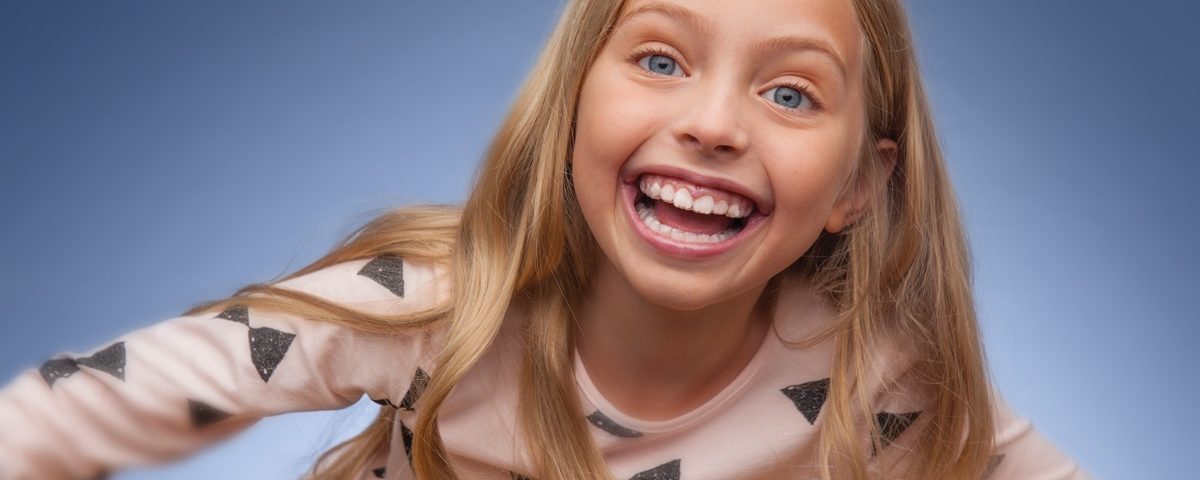
Tooth Eruption: What is Normal?
July 21, 2017What to Expect with Invisalign
October 6, 2017Orthodontic debond day is always a celebration! The patient’s hard work and commitment to orthodontic treatment (be that braces or Invisalign or another form of treatment) pays off and the active treatment is finally finished. In most cases, this has been an about 2 years of treatment and a new smile and bite has emerged. However, most patients do not realize that another equally (yes equally) important stage of orthodontic treatment has started: retention.
Do I even need a retainer?
YES! After orthodontic treatment is completed you will most likely need a retainer. There are only a (very) few cases when no retainers are need. These retainers are an essential part of your orthodontic treatment. Many parents and patients ask about retainers now in the initial consultations at our office. In the past, many people only wore their retainers for a short duration and then would be “done” with the retainer. However, many years of research and experiences shows us that orthodontic retainers are a VERY important part of orthodontics. Some adults are even seeking re-treatment due to shifting over the years.
How long should I wear my retainer?
Unfortunately, there is not a straightforward answer to this question. The answer is HIGHLY dependent on the individual. Your orthodontist takes into account many different factors such where the teeth started, the jaw growth pattern, the age of the patient, etc. There is no time set in stone for retention. In many cases in our office, we follow the rule of thumb “Nighttime for Lifetime.” Now do I expect every patient to wear the same retainer for their whole life? No. This is probably not realistic. In summary, we know that teeth can continue to shift throughout life, and the best way to retain them is with lifetime retainers. Here’s a short video from the AAO about retainers.
Why do I have to wear my retainer full-time?
After you finish your orthodontic treatment, your teeth are mostly like to relapse (move back into their previous position) in the first 3-4 months after removal of appliances. (2) For this reason, most patients need full-time wear of their retainer to prevent any shifting. Many times this full time wear is only temporary and your orthodontist will gradually taper back the wear of your retainer to part-time wear.
What is a permanent retainer used for?
A permanent retainer (also called a fixed or bonded retainer) is a type of retainer that is bonded on the lingual (inside) surfaces of the teeth to prevent those teeth from moving. This type of retainer stays in the mouth all the time and is not removable. Just like every type of retainer, some patients can benefit from this type of fixed retention and others might not be good candidates for a fixed retainer. Most importantly, you should talk to your orthodontist if you are interested in this type of retainer to see if you’re a good candidate.
What are the different types of removable retainers?
There are MANY different types of removable retainers. Just like no two orthodontic treatments are the same, no two retainers are the same. Your orthodontist will most likely recommend a retainer for you that is best for your smile, bite, and jaw pattern. Clear retainers, Hawley retainers, and wrap-around retainers are three of the more common styles. Each type of retainer has specific indications and will work better for some patients.

Will my wisdom teeth cause my teeth to shift after orthodontic treatment?
I answer this question weekly (sometimes daily) in our office. The relationship between wisdom teeth and orthodontic relapse (shifting of lower teeth) is not straightforward. Wisdom teeth are not the sole culprit of orthodontic relapse. Many other factors that can cause this shifting as we age. Research shows that people who do not have wisdom teeth (missing or removed) have the same problems with shifting of teeth as those with wisdom teeth (1). Therefore, wisdom teeth may play a role but the role is not clear.
Questions? Feel free to contact us. We hope everyone has a safe and productive school year!



